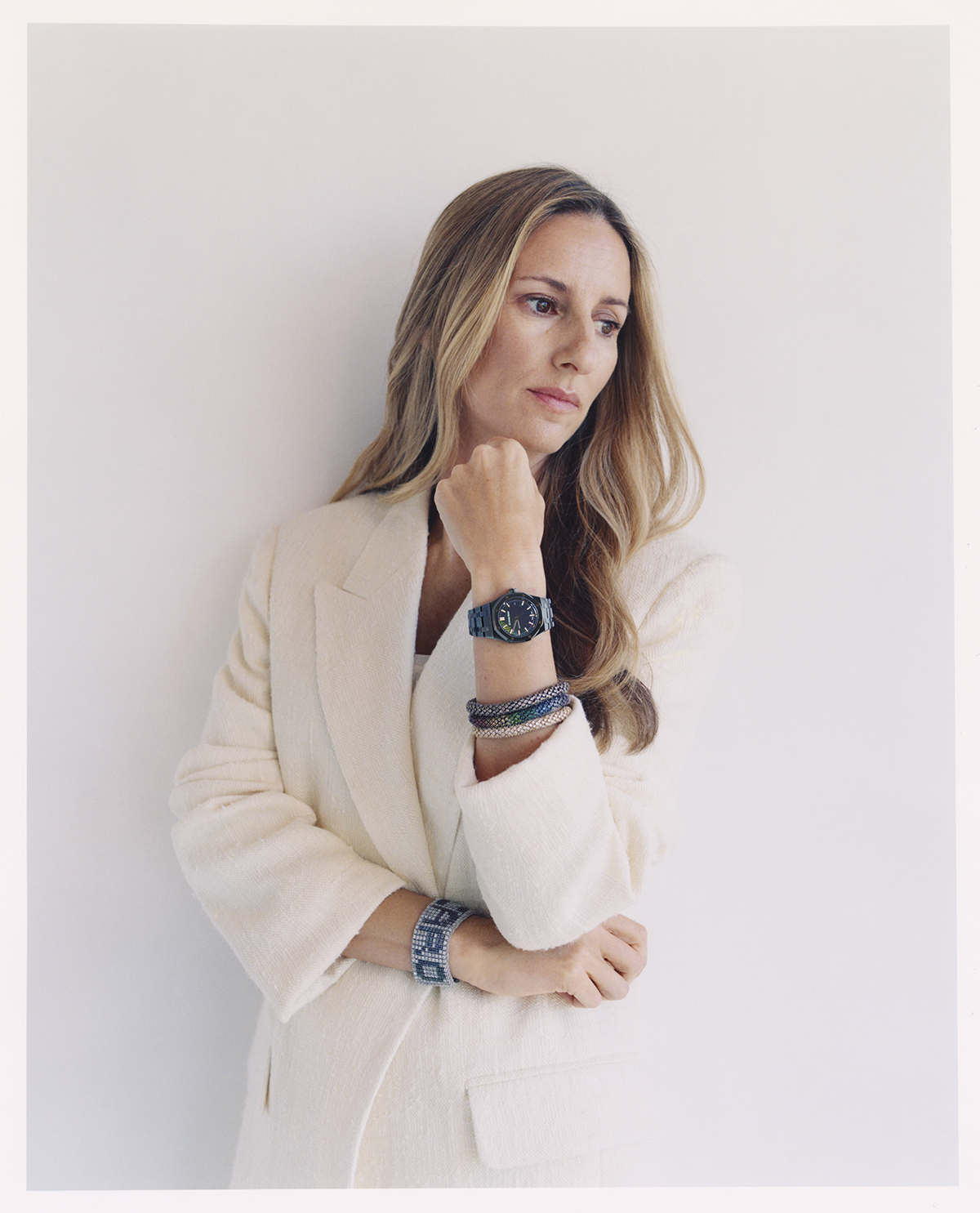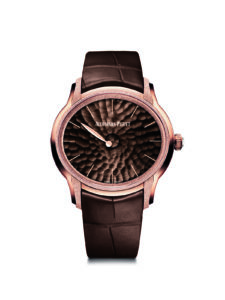
Carolina in the Florence atelier with her father
She shot to success when Sarah Jessica Parker wore her brand’s Lucky bracelet in Sex and the City in 2002, and she has gone on to fuse playful designs with her family’s fine- jewellery tradition. Carolina Bucci talks to LUX’s Samantha Welsh about creating and developing her own brand vision
LUX: Were you expected to join the family business?
Carolina Bucci: My family has made fine jewellery in Florence since 1885, and my father joined the business in his teens. He was clear there was no obligation for us to join, but that if we were interested he would ensure we had a proper apprenticeship. My brother and sister declined, but I was keen. Even before I studied jewellery design at the Fashion Institute of Technology, New York, I had spent time watching our jewellers work, understanding how precise and physical making jewellery is.
Follow LUX on Instagram: luxthemagazine
LUX: How did your vision set you on another path?
CB: Growing up, I was fascinated by costume jewellery: the colours, the shapes and the experimentation. I thought traditional Italian fine jewellery was stuffy and I couldn’t understand how my family heritage could be relevant to my style. In creating Carolina Bucci, I fused these two worlds. Our jewellery is made in the same traditional workshops, but we push our craft to create colourful, unexpected silhouettes that don’t feel formal. We like to say that we make gold do things that it shouldn’t do.

diamond and sapphire Color Field bracelet by Carolina Bucci
LUX: How did your brand adapt during COVID-19?
CB: We are small and family owned, so, whether it was the early restrictions in Italy, safety issues or moving business online, we were agile and I am proud of what we did. We closed our London store before there was any mandate from the UK government to do so; we donated to charities; we tried to keep this non-essential item uplifting. Our FORTE Beads seemed to capture the moment, and we found new ways to tell that story.
LUX: Who is the Carolina Bucci woman?
CB: There are so many voices to our brand. That is why we created La Catena [“chain”] on the website. I wanted a place for them to speak. Whether that is filmmaker Reed Morano talking about her creative process or art dealer Sarah Hoover on motherhood, there is an authentic passion, and I hope that is what we convey. I love designing jewellery and I love aligning myself with people who share that spirit in whatever they do.

Filmmaker Reed Morano for the brand’s website
LUX: Are you involved in content creation?
CB: I design our jewellery, and I am also involved in everything we do: the smell in our stores, the paper and ribbon we use, our digital comms. It is my name above the door, so it is my responsibility to sign off on whatever we send into the world.
LUX: Are you tempted to be more active digitally?
CB: Jewellery is and always will be a tactile category. We have an active, growing online platform, but we couldn’t be a predominantly online brand. Our presence online is just another way for people to interact with our pieces, but it can never replace our stores. We are building a new store in Florence, and one of its most exciting aspects is how it helps us think in a fresh way about our online store. I love how that dialogue happens both ways.

An illustration from Sarah Hoover’s take on motherhood from the Carolina Bucci website
LUX: What is your social-media strategy?
CB: The word that strikes me when I think of social-media strategy is “fatigue”. I think some people design with one eye on how products will look on phones. I am at the other end of the spectrum. If the design is good, those who buy the pieces are your best ambassadors, and whether they tell friends at lunch or post photos for strangers, I am happy for that interaction to take on its own life.

Carolina Bucci wears her own designs and a watch from the Audemars Piguet collaboration
LUX: What about your collaborations?
CB: Our long relationship with Swiss watchmaker Audemars Piguet has been phenomenal and brought us to a new audience. It started because I owned a 1970s AP man’s Royal Oak watch. It was perfect and I didn’t think it could be improved on. I redesigned it for women through a chance meeting with the brand’s CEO, François-Henry Bennahmias in 2013. It helped that we had shared values and ideas – both fourth-generation family businesses, focused on craft before anything else.
Read more: Cindy Chao on heritage and emotion in jewellery
LUX: What is your next move?
CB: We make jewellery, and I don’t plan to make anything else. At the same time, I love collaborating with best-in-class manufacturers… we have made glass in Murano with Laguna B, and stationery and leather goods in Florence with Pineider. I love this ability to inhabit other worlds, particularly in the service of Italian crafts.
Find out more: carolinabucci.com
This article was first published in the Spring/Summer 2023 issue of LUX

















Recent Comments